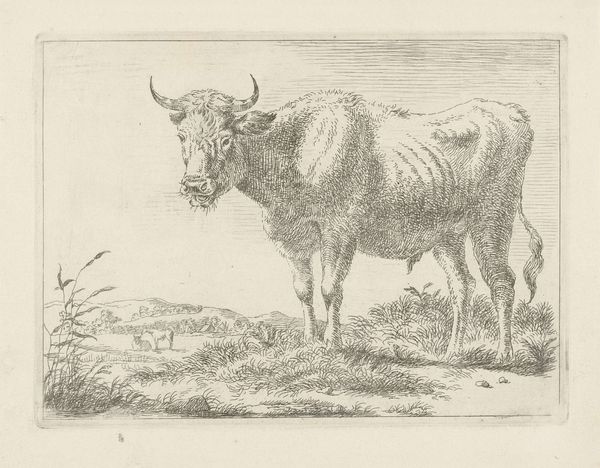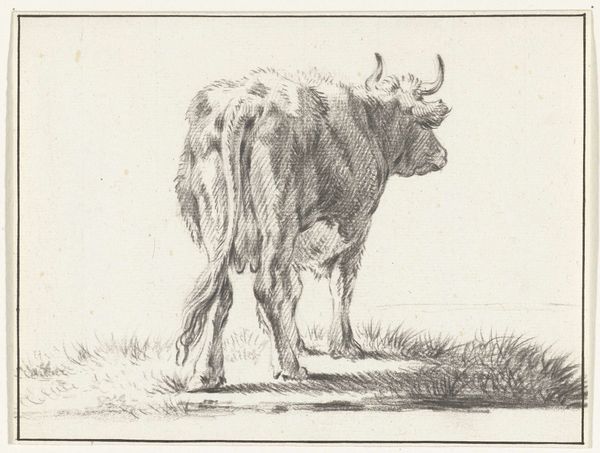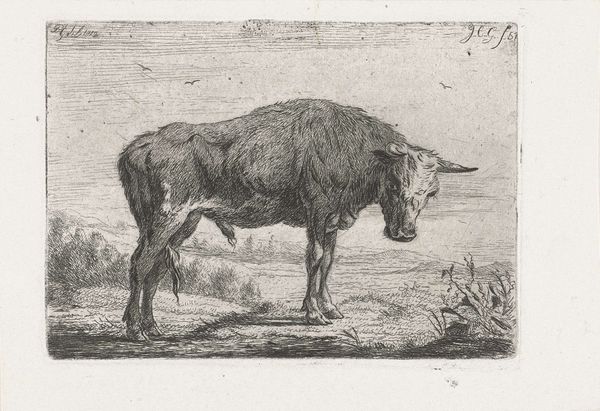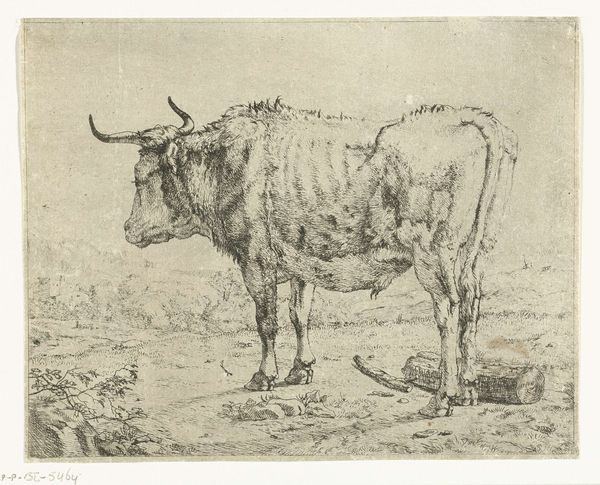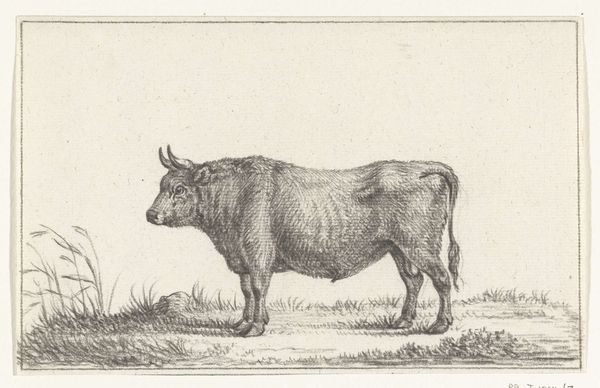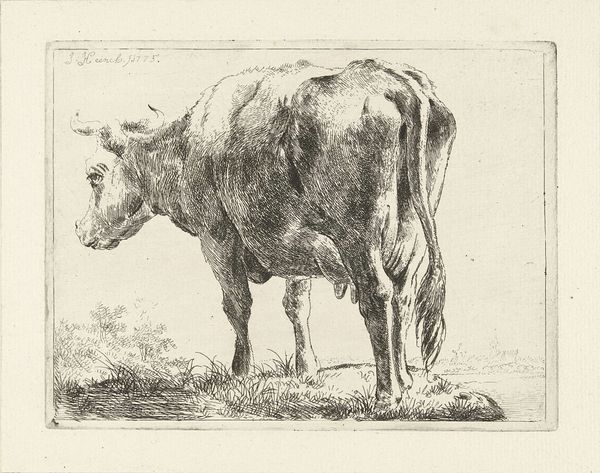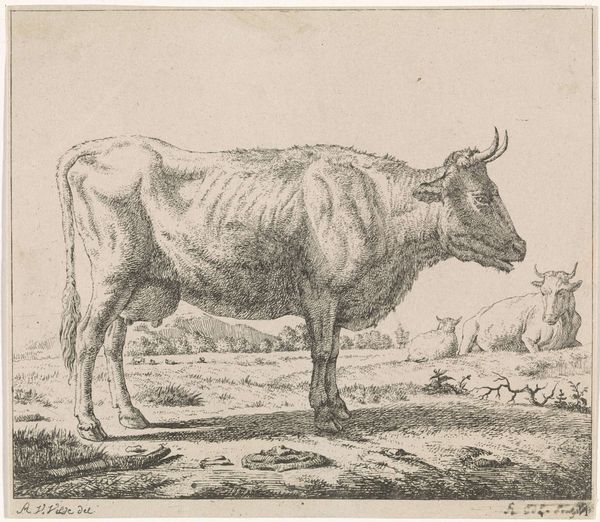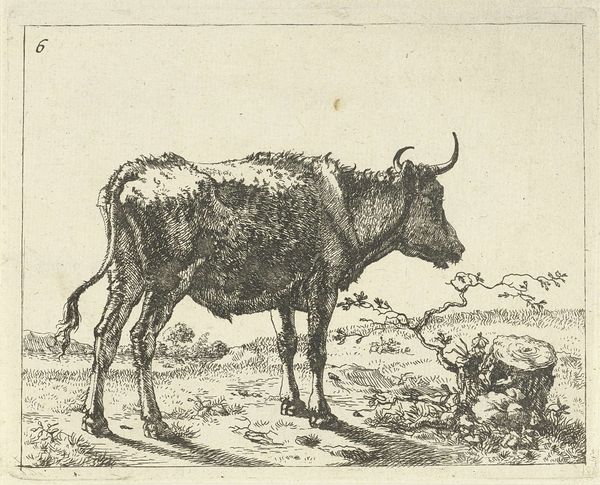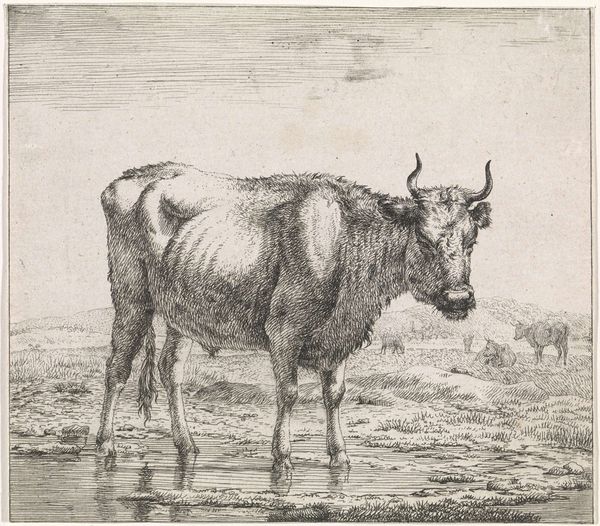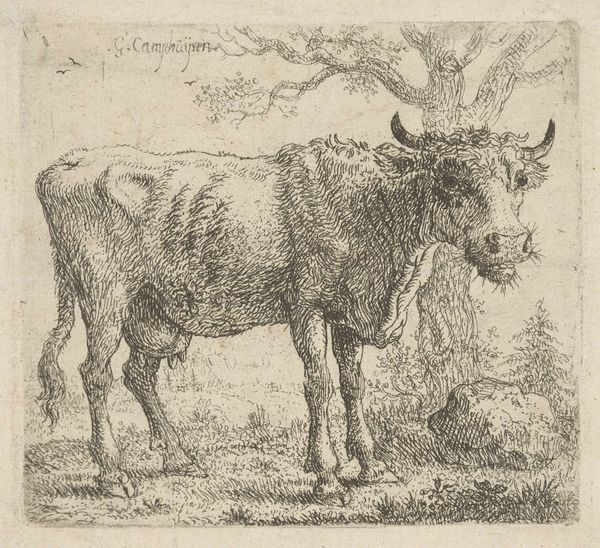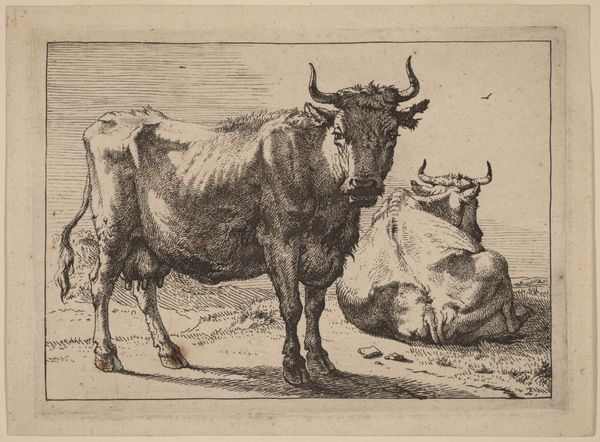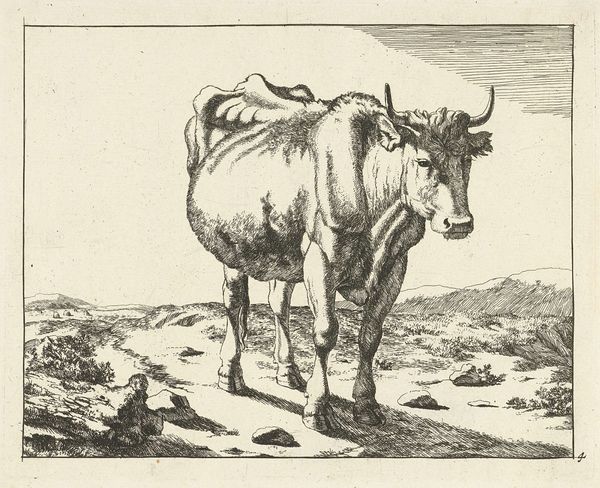
print, etching
# print
#
etching
#
landscape
#
figuration
#
realism
Dimensions: height 130 mm, width 180 mm
Copyright: Rijks Museum: Open Domain
Pieter Gerardus van Os created this print of a standing bull sometime before 1836, using etching. It is a traditional intaglio printmaking technique, where the artist protects areas of a metal plate with wax, and then exposes the unprotected parts to acid, which bites into the metal. In this case, a copper plate would have been used to allow for very fine, controlled lines, as you can see in the details of the bull’s hide, and the landscape beyond. It's a method that favors precision, skill, and the artisan's touch, very different from the industrial printing techniques that were emerging at the time. The image suggests a direct engagement with nature and the agrarian economy, with the bull standing as a symbol of wealth and rural life. The print medium itself, however, reflects the increasing separation of artistic labor from the direct production of agricultural goods. Van Os wasn’t farming, but producing images of farming for a market. Paying attention to these factors of material, making, and context allows us to move beyond traditional art history and see the print as both a work of art, and a document of its time.
Comments
No comments
Be the first to comment and join the conversation on the ultimate creative platform.

